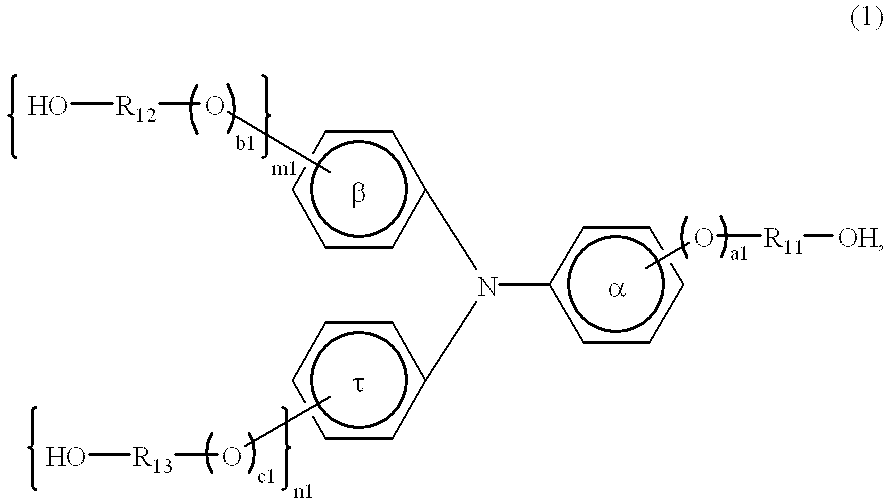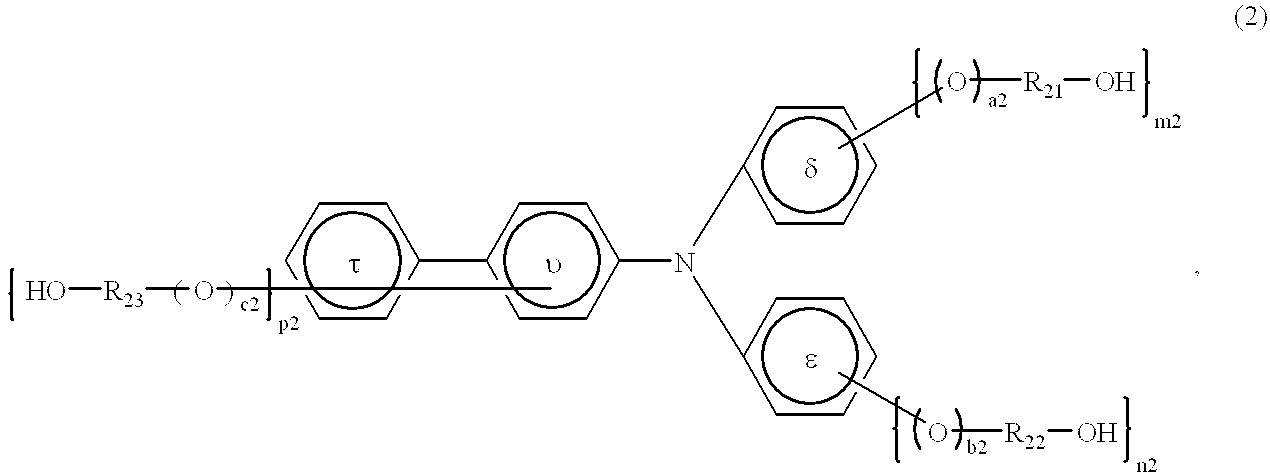Electrophotographic photosensitive member, process cartridge and electrophotographic apparatus
a photosensitive member and electrophotography technology, applied in the direction of electrographic process apparatus, corona discharge, instruments, etc., can solve the problems of trinitrofluorene, trinitrofluorene, etc., and the use of a photoconductor principally comprising a photoconductive polymer as represented, etc., to achieve satisfactory results
- Summary
- Abstract
- Description
- Claims
- Application Information
AI Technical Summary
Benefits of technology
Problems solved by technology
Method used
Image
Examples
examples 2-9
[0166] Sight photosensitive members were prepared and evaluated in the same manner as in Example 1 except for using protective layer-coating liquids obtained by using an Example Compound or a mixture of Example Compounds listed in Table 1 instead of Example Compound (1-23 as the charge-transporting compound.
examples 10-13
[0167] Four photosensitive members were prepared and evaluated in the same,manner as in Examples 1, 5, 6 and 9, respectively, except for using protective layer-coating liquids obtained by reducing the amount of the 7%-surface-treated antimony-doped tin oxide fine particles to 20 parts and further adding 15 parts of 20%-surface-treated antimony-doped tin oxide fine particles (surface-treated with methyl hydrogen silicone oil ("KF99", made by Shin-Etsu Silicone
examples 14-17
[0168] Four photosensitive members were prepared and evaluated in the same manner as in Examples 1, 5, 6 and 9, respectively, except for using protective layer-coating liquids obtained by using 35 parts of surface-untreated antimony-doped tin oxide fine particles ("T-1", made by Mitsubishi Material K.K.) instead of the 7%-surface-treated antimony-doped tin oxide fine particles and further adding 3.5 parts of the fluorine-containing silane coupling agent ("LS-1090") used in Example 1, followed by the dispersion.
PUM
 Login to View More
Login to View More Abstract
Description
Claims
Application Information
 Login to View More
Login to View More - R&D
- Intellectual Property
- Life Sciences
- Materials
- Tech Scout
- Unparalleled Data Quality
- Higher Quality Content
- 60% Fewer Hallucinations
Browse by: Latest US Patents, China's latest patents, Technical Efficacy Thesaurus, Application Domain, Technology Topic, Popular Technical Reports.
© 2025 PatSnap. All rights reserved.Legal|Privacy policy|Modern Slavery Act Transparency Statement|Sitemap|About US| Contact US: help@patsnap.com



